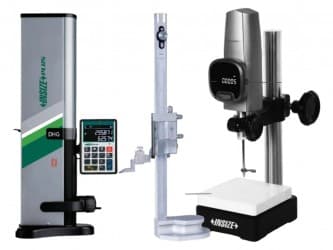Force Gauges
Force gauges, also known as tension gauges or
push-pull gauges, are measuring instruments used to quantify the force applied
to an object or surface. They are commonly used in various industries and
applications where precise force measurement is required. Here are some key
features and considerations regarding force gauges:
1. Force Measurement: Force gauges are designed to measure both tension
(pulling) and compression (pushing) forces. They can measure forces in various
units, such as pounds (lb), Newtons (N), kilograms (kg), or ounces (oz),
depending on the scale and unit of measurement selected.
2. Load Capacity: Force gauges have different load capacities, indicating
the maximum force they can measure accurately. The load capacity ranges from a
few ounces to several thousand pounds, allowing for a wide range of force
measurement applications.
3. Display and Readability: Force gauges typically feature a digital display
that shows the measured force in real-time. The display can show either a
numerical value or a graphical representation of the force applied. It is
important to choose a force gauge with a clear and easily readable display.
4. Accuracy and Resolution: The accuracy of a force gauge refers to how
closely the measured value corresponds to the true force applied. It is
important to consider the required level of accuracy for your specific
application. Resolution refers to the smallest increment of force that the
gauge can measure. Higher resolution allows for more precise force measurement.
5. Attachments and Accessories: Force gauges often come with a variety of
attachments and accessories to accommodate different testing scenarios. These
can include flat and pointed tips, hooks, chucks, and grips that can be
attached to the force gauge to suit the specific application or object being
tested.
6. Data Recording and Analysis: Some advanced force gauges have built-in
data recording and analysis capabilities. They can store and log force
measurements for later analysis, provide statistical analysis of force data,
and even generate reports. This can be useful for quality control, research, or
documentation purposes.
7. Portability and Handheld Design: Many force gauges are portable and
designed to be handheld for ease of use. This allows for convenient on-site
measurements and testing. Some models are compact and lightweight, making them
suitable for fieldwork or mobile applications.
When choosing a
force gauge, consider the specific requirements of your application, including
the expected force range, accuracy, and resolution needed. It is also important
to ensure that the force gauge is calibrated regularly to maintain accurate
measurements.





